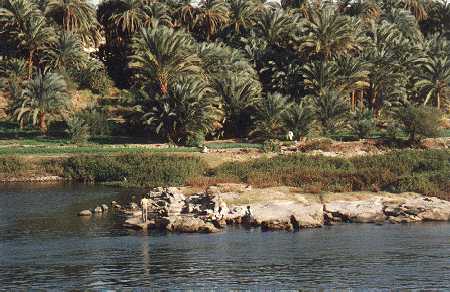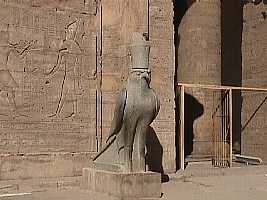South Egypt
South Egypt (Upper Egypt)
Best to visit the south of Egypt by Nile Cruise (A floating Hotel) to enjoy the nature and comfortable accomodation while you can make all possible visits. The Nile cruise journey is a romantic dream and recommended for Honey mooners from all over the world. If you prefer to visit the south in an overland tour you will have to spend more time and make more effort to visit small villages and monuments out of Luxor and Aswan.

Luxor
| Old name was Thebes and since Arabic ages it become Luxor. It lies in the South of Egypt. Luxor city has a lot of Pharaonic monuments such as temples, tombs and museums. These monuments are distributed by the two Nile sides (East and West) like other cities in the south. Must see : (East-side of the Nile) Karnak Temple and Luxor Temple (West-side of the Nile) Memnon Colossi, Valley of the Kings, Valley of the Queens and Queen Hatshpsute temple | 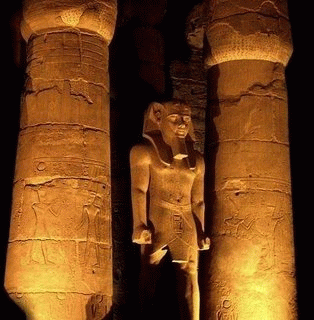 |
Edfu
| The Temple of Edfu is an ancient Egyptian temple located on the west bank of the Nile in the city of Edfu.The temple, dedicated to the falcon god Horus, was built in the Ptolemaic period between 237 and 57 BCE. The inscriptions on its walls provide important information on language, myth and religion during the Greco-Roman period in ancient Egypt. | |
Kom Ombo
Kom Ombo is an agricultural town in Egypt famous for the Temple of Kom Ombo. It was originally an Egyptian city called Nubt, meaning City of Gold.
The town's location on the Nile 50 km north of Aswan (Syene) gave it some control over trade routes from Nubia to the Nile Valley, but its main rise to prominence came with the erection of the temple in the 2nd century BC.
The Temple of Kom Ombo is an unusual double temple built during the Ptolemaic dynasty in the Egyptian town of Kom Ombo. Some additions to it were later made during the Roman period. The building is unique because its 'double' design meant that there were courts, halls, sanctuaries and rooms duplicated for two sets of gods.The southern half of the temple was dedicated to the crocodile god Sobek, god of fertility and creator of the world with Hathor and Khonsu.Meanwhile, the northern part of the temple was dedicated to the falcon god Haroeris, also known as Horus the Elder, along "with Tasenetnofret (the Good Sister, a special form of Hathor) and Panebtawy (Lord of the Two Lands)."The temple is atypical because everything is perfectly symmetrical along the main axis.
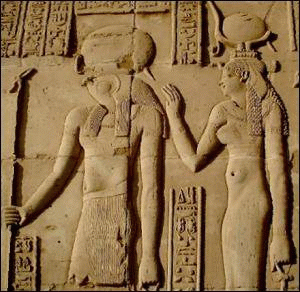
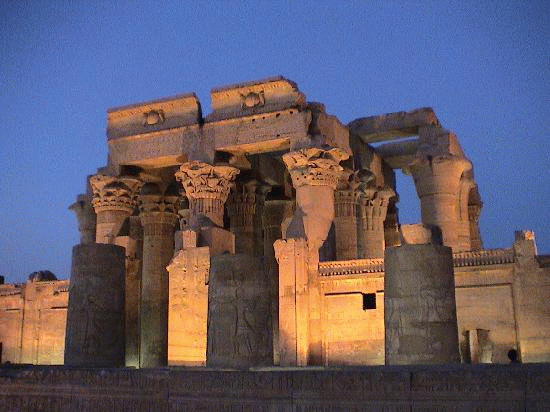
Aswan
| Egypt's sunniest southern city and ancient frontier town located south to Luxor, has a an African atmosphere. Aswan Has the most beautiful setting on the river Nile and the kind hearted people. In Aswan many visitors were enchanted and decided to spend the rest of their life there. Must see : Aswan High Dam – The Unfinished Obelisk –Philae Island and temple (near to Aswan) by boat. |

Abu Simbel
Abu Simbel is a village lying south of Aswan and only 40 km north of the Sudanese border.
Abu Simbel temples refers to two massive rock temples in Abu Simbel southern Egypt on the western bank of Lake Nasser about 230 km southwest of Aswan (about 300 km by road).
The twin temples were originally carved out of the mountainside during the reign of Pharaoh Ramesses II in the 13th century BC, as a lasting monument to himself and his queen Nefertari, to commemorate his alleged victory at the Battle of Kadesh, and to intimidate his Nubian neighbors. However, the complex was relocated in its entirety in 1968
The Great Temple of Ramses II. was positioned by the ancient Egyptian architects in such a way that twice a year, on February and October 20, the rays of the sun would penetrate the sanctuary and illuminate the sculpture on the back wall, except for the statue of Ptah, the god connected with the Underworld, who always remained in the dark. These dates are allegedly the king's birthday and coronation day respectively, but there is no evidence to support this.
The relocation of the temples was necessary to avoid their being submerged during the creation of Lake Nasser, the massive artificial water reservoir formed after the building of the Aswan High Dam on the Nile River. Abu Simbel remains one of Egypt's top tourist attractions.
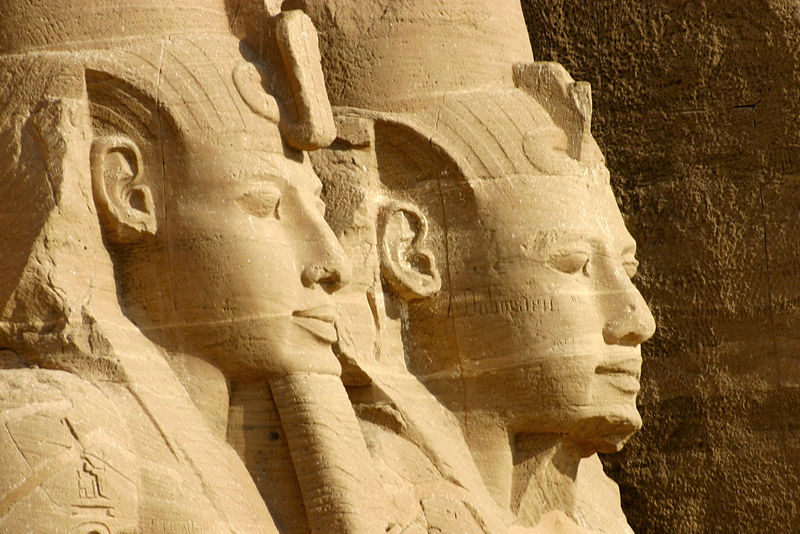 |  |
